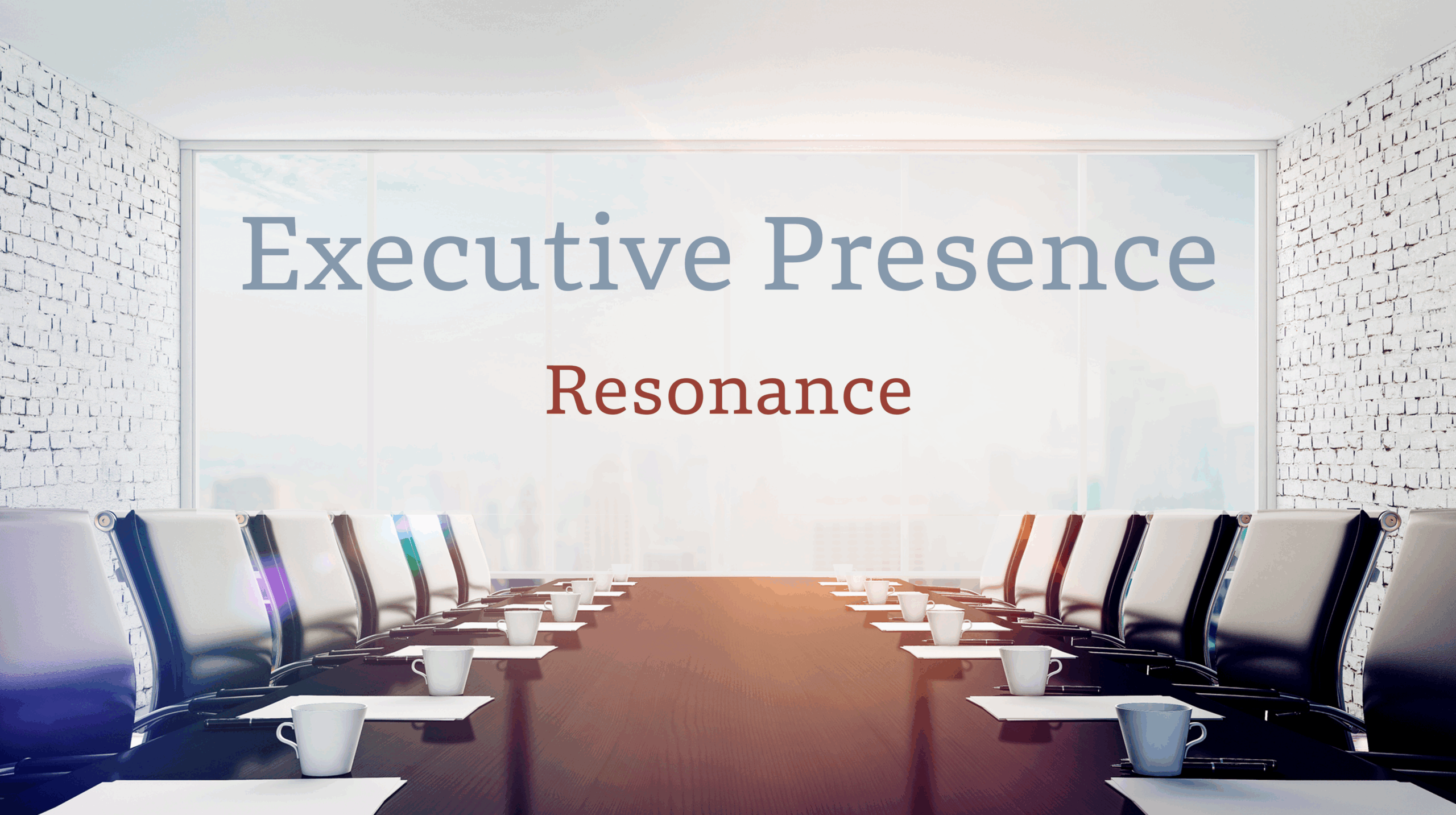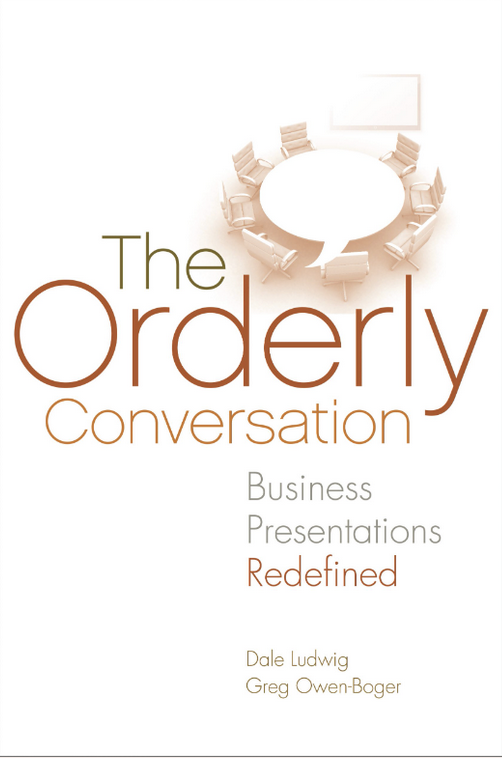
- Dale Ludwig Leadership
Resonance is One of the Fifteen Facets of Executive Presence
This article is one in a series focusing on Executive Presence and how leaders can meet their potential through improved communication. Executive Presence is defined by Suzanne Bates in her book “All the Leader You Can Be: The Science of Achieving Extraordinary Executive Presence” as “The qualities of a leader that engage, inspire, align, and move people to act… By understanding how your intentions as a leader match up with perceptions, you can learn how to flex your style to gain trust, build alignment, lead change, inspire performance, and drive executional excellence.”
This article focuses on Resonance, one of the 15 facets that make up a 3-dimensional leader.
Click here to gain a greater understanding of (a) executive presence in general and (b) the other facets that make up a well-rounded leader.
What is Resonance?
Bates describes Resonance, one of the fifteen facets of executive presence, as “connecting with others; attentive, attuned, and responsive to feelings, motivations, and thoughts; deepening alignment.”
People with a high level of Resonance are fully present and attentive during conversations, able to read the room and respond accordingly. Because they are excellent listeners, they create an open environment that invites dialogue.
Two Layers of Resonance
Some facets in the Bates model have two layers. Resonance is one of them. Emotional Resonance focuses on connecting with people on the human, emotional level through listening and expressing empathy. Technical Resonance focuses on tailoring communications, especially highly detailed or technical data, to make it easy for non-technical people to understand.
How Resonance Makes People Feel
Resonance is about more than one’s ability to communicate clearly. It’s about sensing what others are feeling and responding in a way that feels right to them. In this way, Resonance helps you nurture relationships and build trust. Your efforts to empathize with others and adapt to their needs make others feel:
- You are doing your best to help me understand.
- You care about me as an individual.
Not Enough Resonance
When someone is lacking in Resonance, they may
- Appear distant or “checked out”
- Alienate others by talking down to them
- Use language that confuses or makes others feel inadequate
- Not listen well
- Fail to pick up on social cues
- Appear to be “phoning in” your message without concern for this particular group of people
Specific Behaviors to Improve Perceptions of Resonance
Here are some behaviors and techniques you can use to connect more deeply with others.
- Simplify your message and use language others can easily understand.
- Avoid unnecessary or confusing jargon that listeners may be unfamiliar with.
- Listen well.
- Express empathy.
- Tell stories to make concepts real and relevant to others.
- Communicate expectations in meeting invitations.
- In meetings and when writing, set context and establish common ground.
- Make documents easy to navigate and skim for specific information.
Too Much Resonance
When someone exhibits too much of a particular facet, it can become an overstrength. An overstrength often results in negative perceptions. Indicators that you have an overstrength in Resonance include
- Over-identifying with others and taking on their emotions
- Focusing so much on others’ feelings that you find it hard to say no or make decisions that may upset them
A Story About Resonance
Let’s look at Marguerite. She’s the new Managing Art Director at a small and quickly growing publishing company. She is very talented, likable, and dynamic. She had a great track record at her previous organization, and she was brought in specifically for her ability to grow healthy organizations quickly. During her interviews, she was told that her new staff isn’t used to modern publishing norms, so she’d have to deal with that. She was also told that the staff isn’t used to the fast pace that’s typical in larger publishing firms.
Wanting to hit the ground running, her first week on the new job consisted of meetings with the art and design staff. During these lively meetings, Marguerite did most of the talking and used terminology and acronyms from her previous job that her new staff did not understand. Her high energy and quick speaking pace left little opportunity for her new staff to ask questions or provide input. As a result, the staff felt put off, intimidated, and confused.
After a few weeks, the situation grew worse. Marguerite’s counterpart in another department took her to lunch and explained that she was alienating her team and that they were on the verge of an outright rebellion.
After some coaching, Marguerite called a reboot meeting. During the meeting, she focused on opening up and delivering a message that resonated with her staff. Here’s what she did:
- She told a story about why senior management brought her on board.
- She explained her vision and gave a high-level summary of what they wanted her to accomplish in her new role.
- She avoided using the terminology she was accustomed to from her old position, relying instead on simple, clear communication.
During this meeting, Marguerite also focused on listening. She asked the group if management’s goals aligned with their perspective. She asked them to explain how they felt about their workflow, and what they saw as its strengths and weaknesses. She probed for clarity and did her best to understand her team’s perspective. The following week, she held get-to-know-you conversations with each member of the team.
It took time, but Marguerite’s pivot to Resonance greatly improved the relationships she had with her team. Further, now that the team is better aligned, they are positioned for rapid growth, which is why Marguerite was hired in the first place.
Some Facets Ride Together
Often, when we lean into particular facets (or pull back from them), other facets “come along for the ride.” In Marguerite’s case, by leaning into Resonance, she also improved perceptions of Authenticity, Concern, Vision, Inclusiveness, and Interactivity.
Final Thoughts About Resonance
Resonance is in the Substance dimension in the Bates model, which means that it is a facet cultivated over your career that helps build credibility and is relevant to your social role as a leader. These facets include the knowledge and wisdom you have developed, your ability to synthesize information and apply it to the here and now, as well as your ability to connect with and respond to the people you lead.
Since individuals who are considered high in Resonance are excellent listeners, improving your listening skills is a good first step to developing your Resonance. In this article, “Three Steps to Improve Listening Skills”, I build on an article in the Harvard Business Review and offer specific skills to work on.
About this Series of Articles
For a full understanding of executive presence and the model we follow, read this overview article.
To learn more about specific facets within the executive presence model, click a link below. In these articles, we examine how Bates defines each facet and the communication skills and behaviors that support them.
| Character | Substance | Style |
|---|---|---|
| Authenticity | Practical Wisdom | Demeanor |
| Integrity | Confidence | Intentionality |
| Concern | Composure | Inclusiveness |
| Restraint | Resonance | Interactivity |
| Humility | Vision | Assertiveness |
If you’d like to learn more or explore executive presence coaching options for yourself or your team, click here to schedule a call.

